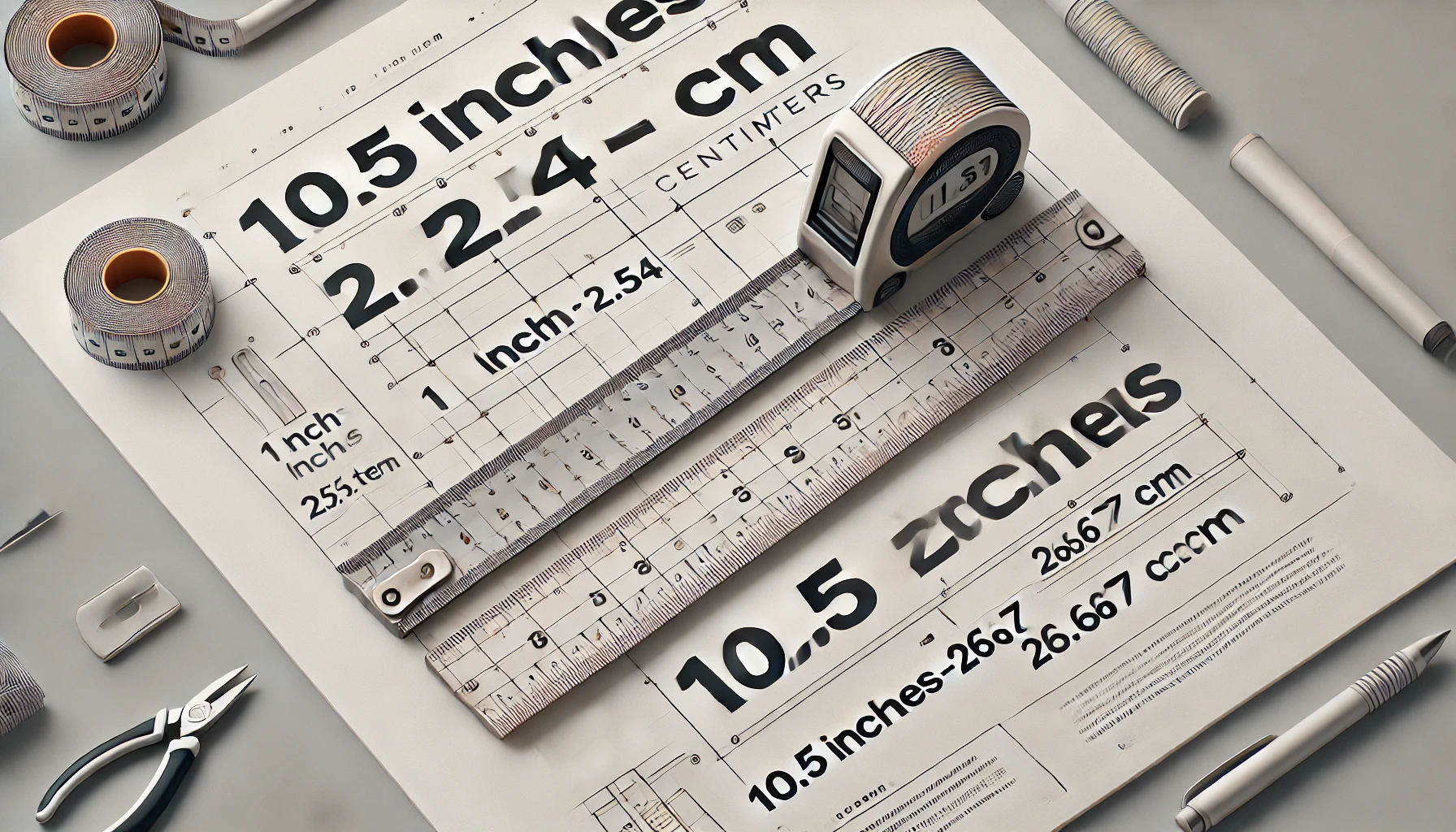Introduction
Understanding measurements and conversions is a fundamental skill in daily life, whether you’re working on a DIY project, shopping for clothes, or learning new concepts in school. If you’ve ever found yourself needing to convert inches to centimeters, you’re not alone. This guide will help you understand how to convert 10.5 inches to cm and why this measurement is important in various contexts. We will also explore the formula and provide practical examples to make the process easier to understand.
Why Converting Inches to Centimeters Matters
The inch is commonly used in the United States and a few other countries, while the centimeter is part of the metric system used by most of the world. This can cause confusion when measurements are needed across different systems. Whether you’re measuring height, objects, or other dimensions, knowing how to convert between inches and centimeters is a valuable skill. In this article, we’ll focus on converting 10.5 inches to cm and explain how to do this conversion easily and accurately.
Understanding the Conversion Formula: Inches to Centimeters
1 inch = 2.54 centimeters
Therefore, to convert 10.5 inches to cm, we simply multiply the number of inches by 2.54:
10.5 inches×2.54=26.67 cm10.5 \text{ inches} \times 2.54 = 26.67 \text{ cm}10.5 inches×2.54=26.67 cm
So, 10.5 inches equals 26.67 centimeters. It’s as simple as that!
Why Convert Inches to CM?
The need to convert inches to centimeters arises in many everyday scenarios:
- International Travel: When traveling, maps, height restrictions, and various measurements might use centimeters.
- Clothing Size Conversion: International clothing brands typically use centimeters for sizing, especially in countries that follow the metric system.
- Scientific Measurements: Many scientific fields use the metric system, so accurate conversions are essential for research and experiments.
- Construction & Design: Builders and designers often switch between inches and centimeters depending on the standard used in their country or the precision required.
Knowing how to convert measurements like 10.5 inches to cm is essential in these and many other situations.
Step-by-Step Process to Convert 10.5 Inches to CM
Here’s a simple breakdown of how to convert inches to centimeters:
This is how you can easily convert 10.5 inches to cm in just a few steps!
How Accurate Is the Conversion?
The conversion from inches to centimeters is highly accurate, thanks to the precise definition of 1 inch being exactly 2.54 centimeters. However, in practical applications, especially when dealing with small measurements, it’s important to round off the result based on the required level of precision.
For example, 10.5 inches to cm is calculated as 26.67 cm, but if you’re working with approximate values, you might round it to 26.7 cm or 27 cm depending on the context.
Real-Life Examples of Converting 10.5 Inches to Centimeters
Here are some practical examples where you might need to convert 10.5 inches to cm:
- Clothing Size Conversion: If you buy a pair of shoes that list a size of 10.5 inches, you would convert that to 26.67 cm to understand the European size equivalent.
- Measuring Dimensions: When measuring the width of an object in inches, such as a picture frame or a piece of fabric, you may need to convert the result to centimeters for compatibility with international standards or measurement tools.
- Height Measurement: A person who is 10.5 inches tall (though quite short for a human!) would be measured as 26.67 cm in metric units.
The Importance of Knowing the Conversion Formula
Knowing the conversion formula between inches and centimeters is more than just academic knowledge; it’s practical for many everyday tasks. The metric system, which uses centimeters, is more universally adopted than the imperial system that uses inches, particularly in engineering, scientific fields, and global commerce.
How to Convert Other Measurements Like 10.5 Inches to CM
If you need to convert other measurements, the same formula applies. Just multiply the number of inches by 2.54 to find the equivalent in centimeters.
For example:
- 5 inches = 12.7 cm
- 20 inches = 50.8 cm
- 50 inches = 127 cm
This consistent formula makes it easy to convert measurements accurately.
Why 10.5 Inches Might Be a Specific Conversion
In some cases, 10.5 inches may come up frequently in certain industries. For example, in the electronics industry, many products like tablets, phones, and screens have dimensions measured in inches, but their specifications and compatibility might be easier to understand in centimeters.
Additionally, 10.5 inches may be used in textiles when measuring fabric widths, especially for international suppliers who use metric units. Converting to 26.67 cm helps standardize the measurement.
Frequently Asked Questions (FAQs)
1.How many centimeters are exactly equal to 10.5 inches?
The exact conversion of 10.5 inches to centimeters is 26.67 cm. This is because 1 inch equals exactly 2.54 cm.
2. Why do we use centimeters instead of inches in many countries?
3. How can I convert inches to centimeters without a calculator?
If you don’t have a calculator, you can memorize the conversion factor (2.54 cm = 1 inch) and use it for quick mental calculations. For example, multiply the number of inches by 2.5 for a rough estimate, then adjust if needed.
4. How do I convert multiple measurements like 10.5 inches to cm?
For multiple conversions, simply apply the same formula (1 inch = 2.54 cm) to each measurement. You can also create a conversion table for quick reference.
Conclusion: Converting 10.5 Inches to CM Made Simple
Now that you know how to convert 10.5 inches to cm, you can easily tackle any measurement conversion in your daily tasks. Whether you’re working on a project, converting clothing sizes, or dealing with scientific data, knowing how to switch between inches and centimeters is a crucial skill. Remember, 10.5 inches is equal to 26.67 cm, and you can use the simple formula of multiplying by 2.54 to convert any other inch measurement to centimeters.
By understanding the steps and applying the conversion consistently, you’ll have the confidence to handle measurements in both imperial and metric systems with ease.








